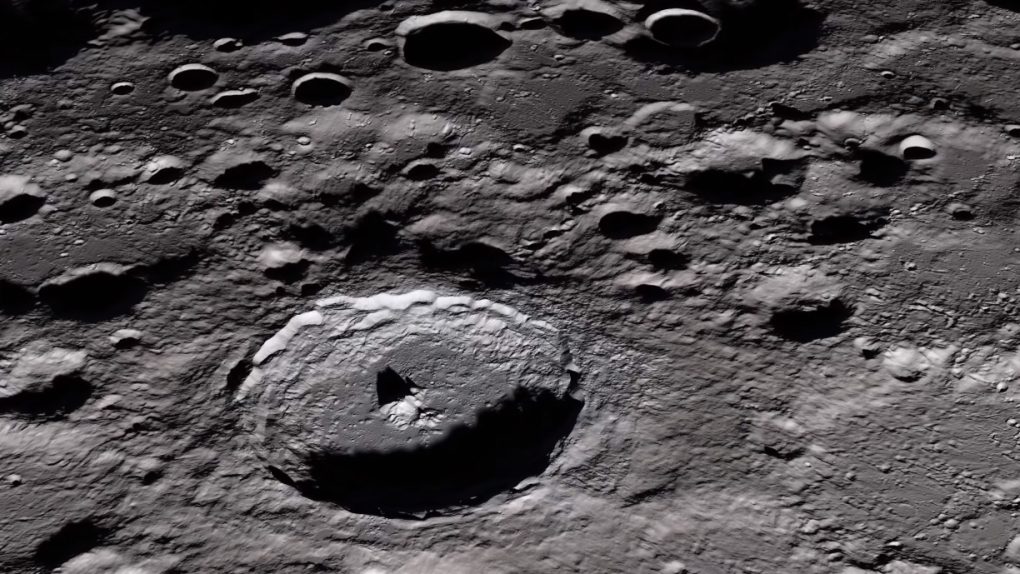- China says the strange ‘gel’ substance it detected on the surface of the Moon was actually a mixture of many different things.
- The material likely didn’t originate where it was found but was instead blasted out of its original location by an impact.
- Future missions to the Moon may use lunar material to build structures.
When China sent its Chang’e-4 mission to the far side of the Moon last year it was a major win for the country. It was the first successful soft landing of a spacecraft on the Moon’s lesser-seen side, and the country’s rover was able to do a bit of exploring and make some neat discoveries. Then, someone weird happened.
Images from the lander showed what appeared to be a greenish “gel-like” substance surrounding a crater nearby. It was so bizarre that the rover’s handlers decided to break off its course and direct the rover to further examine the substance. It managed to snag a sample of the “gel,” and now a new paper published in Earth and Planetary Science Letters offers an explanation as to what it is and why it’s on the Moon.
As it turns out — and what was highly suspected after researchers began to weigh in on the images of the “gel” — it wasn’t a gel-like substance at all, at least how we’d normally think of a gel. Instead, it’s a mixture of various substances including possible glass that was formed in the heat of an impact with the lunar surface, giving it a shiny appearance.
According to the research team, the sample contained material from other nearby craters, indicating that the glassy substance was originally present somewhere else but was blasted to its current location by a separate impact. Tracing the true source of the material is difficult, and China’s Yutu-2 rover doesn’t have the capability to go on a long expedition in search of its origins, but the scientists were able to draw some firm conclusions nonetheless.
“Chang’e-4 rover discovered a dark greenish and glistening impact melt breccia in a crater during its traverse on the floor of Von Kármán crater within the South Pole Aitken (SPA) basin on the lunar farside,” the scientists write. “It was formed by impact-generated welding, cementing and agglutinating of lunar regolith and breccia. Clods surround the breccia-hosting crater were crushed into regolith powders by the rover’s wheels, indicating the regolith may be compacted slightly and becomes blocky and friable.”
Regardless of where the material originally formed, it’s an interesting discovery. Scientists have long been curious about the properties of the lunar soil, or regolith, and understanding how impacts can cause changes and form new materials is a step in the right direction. When crewed missions to the Moon resume in 2024 (tentatively), astronauts may eventually come to rely on the lunar soil to provide resources, or even use it as a building material.







